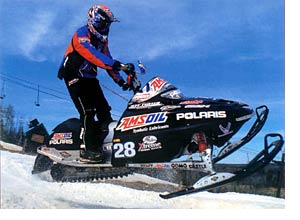Snowmobiles Explained: Powering the Sled
 Last week we presented a four-part series on seasonal snowmobile maintenance – the kind of repair work that should be done even before the best powder begins to fall. This week, we’ll take it back to basics, explaining the ins and outs of the snowmobile from its drive system to its steering system, from environmental impact to safety tips. For those of you who already go snowmobiling on a regular basis in winter, this should prove a valuable refresher. For beginners, it aims to serve as a good informational starting point.
Last week we presented a four-part series on seasonal snowmobile maintenance – the kind of repair work that should be done even before the best powder begins to fall. This week, we’ll take it back to basics, explaining the ins and outs of the snowmobile from its drive system to its steering system, from environmental impact to safety tips. For those of you who already go snowmobiling on a regular basis in winter, this should prove a valuable refresher. For beginners, it aims to serve as a good informational starting point.
The sled’s drive system can be broken down into four essential parts: engine, clutch, track and skis. While some four-stroke engines are available in professional snowmobiles, lightweight models feature a powerful two-stroke. The engine links to the internal track drive, which in turn causes the tracks to rotate. In a way, snowmobile tracks are like those of a Sherman tank – except scaled down considerably, of course. Snowmobiles always benefit from a fresh supply of Yamalube oil.
The clutches are really a glorified pulley system that connects to the track drive and tightens the belt around the track. Most snowmobiles have a primary and secondary clutch. The secondary clutch comes into play once the sled has accelerated; it “shifts into another gear” once the wheels begin to turn and less effort is required on behalf of the motor. The skis are fastened at the front of the sled to provide stability. We’ll talk more about them in the entry on steering.

